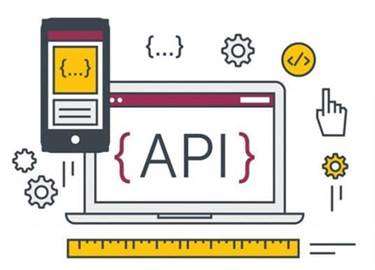Avoiding False Pass or False Fail
A security threat originating from within the organization, often by an authorized system user. An organization responsible to test and certify that the software, hardware, firmware, platform, and operating system follow all the jurisdictional rules for each location where the product will be used. A tool that facilitates the recording and status tracking of incidents. https://www.globalcloudteam.com/ They often have workflow-oriented facilities to track and control the allocation, correction and re-testing of incidents and provide reporting facilities. A person or organization who is actively involved in security attacks, usually with malicious intent. Testing performed by interacting with the software under test via the graphical user interface.

When that occurs, additional test techniques can be used, such as analog open techniques to give incremental coverage on input or output pins. After the test program has been completed, there is confidence that the PCB can be tested to a certain level. However, test coverage still is theoretical and needs to be verified by using the program to test the target PCB. The first type is a defect such as a short, open, missing, or nonfunctioning device that stops the PCB from working correctly. These normally are easy to verify by a diagnostic and repair technician because they are absolute defects that affect the performance of the board.
Type I and type II errors
A software tool developed specifically for a set of users or customers. Users, tasks, equipment , and the physical and social environments in which a software product is used. Logical operators from high-level test cases are replaced by actual values that correspond to the objectives of the logical operators. The capability of the software product to adhere to standards, conventions or regulations in laws and similar prescriptions.

Possible causes of a real or potential defect or failure are organized in categories and subcategories in a horizontal tree-structure, with the defect or failure as the root node. A document reporting on any flaw in a component or system that can cause the component or system to fail to perform its required function. 100% branch coverage implies both 100% decision coverage and 100% statement coverage.
Crossover error rate
Bugs that are incorporated into a finished product are more costly to fix than catching them early in incremental releases. In a culture of failure, which is also called a blameless culture, failures are quick and safe. Leaders create a self-organized environment where employees can freely experiment and come up with ideas. Managers also moderate the challenges that employees have to work through.

The result of a hazard analysis will drive the methods used for development and testing of a system. Testing performed to expose defects in the interfaces and interaction between hardware and software components. Dynamic testing performed using real hardware with integrated software in a simulated environment. An approach to software measurement using a three-level model conceptual level , operational level and quantitative level . Testing based on an analysis of the specification of the functionality of a component or system. An integration approach that combines the components or systems for the purpose of getting a basic functionality working early.
Test Solutions that Accelerate Design
The computing-based processes, techniques, and tools to support testing. The degree to which a component or system can exchange information with other components or systems, and/or perform its required functions while sharing the same hardware or software environment. A black-box test design technique in which test cases are designed to execute specific combinations of values of several parameters. Excessive emotional or psychological dependence on another person, specifically in trying to change that person’s current behavior while supporting them in continuing that behavior. For example, in software testing, complaining about late delivery to test and yet enjoying the necessary “heroism”, working additional hours to make up time when delivery is running late, therefore reinforcing the lateness.
The process of recording information about tests executed into a test log. A chronological record of relevant details about the execution of tests. The layer in a generic test automation architecture which supports the execution of test suites and/or test cases.
False-Negative Result
A security attack recovering secret passwords stored in a computer system or transmitted over a network. Decision rules used to determine whether a test item has passed or failed. The defined time delay between iterations of the test scenario execution. A form what is false-fail result of integration testing where all of the nodes that connect to a given node are the basis for the integration testing. The degree to which a system is composed of discrete components such that a change to one component has minimal impact on other components.

A team starts a new project or task, obtains feedback early on, and then analyzes whether the project will be successful. If a task or project is moving in the wrong direction, team members are encouraged to stop work as soon as possible. Kanban Kanban Journey The evolutionary agile framework for your organization.
Dictionary Entries Near false
A type of interface in which the components or systems involved exchange information in a defined formal structure. Testing based on a systematic analysis of e.g., product risks or requirements. The process of obtaining user account information based on trial and error with the intention of using that information in a security attack. Sohrab is a long-standing Certified Scrum Trainer and CEO of the Scrum Academy GmbH based in Cologne. He is a trained medical doctor and worked for Bain & Company as a consultant and as a CIO at SE-Consulting, among others, before founding the Scrum Academy.
- If this project fails it will affect not only our department, but also the whole organization.
- Facilitate a culture of safe failure by removing the negative connotation from failing.
- A person who is responsible for the design, implementation and maintenance of a test automation architecture as well as the technical evolution of the resulting test automation solution.
- Formal, possibly mandatory, set of requirements developed and used to prescribe consistent approaches to the way of working or to provide guidelines (e.g., ISO/IEC standards, IEEE standards, and organizational standards).
- The test closure phase consists of finalizing and archiving the testware and evaluating the test process, including preparation of a test evaluation report.
A systematic approach to risk identification and analysis of identifying possible modes of failure and attempting to prevent their occurrence. The behavior predicted by the specification, or another source, of the component or system under specified conditions. A black-box test design technique in which test cases are designed to execute representatives from equivalence partitions. In principle, test cases are designed to cover each partition at least once. A cross-functional team of stakeholders who manage reported defects from initial detection to ultimate resolution .
Fail fast vs. fail safe
An iterative and incremental software development process driven from a client-valued functionality perspective. Feature-driven development is mostly used in Agile software development. The capability of the software product to maintain a specified level of performance in cases of software faults or of infringement of its specified interface. An informal test design technique where the tester actively controls the design of the tests as those tests are performed and uses information gained while testing to design new and better tests. A procedure to derive and/or select test cases targeted at one or more defect types, with tests being developed from what is known about the specific defect type.

